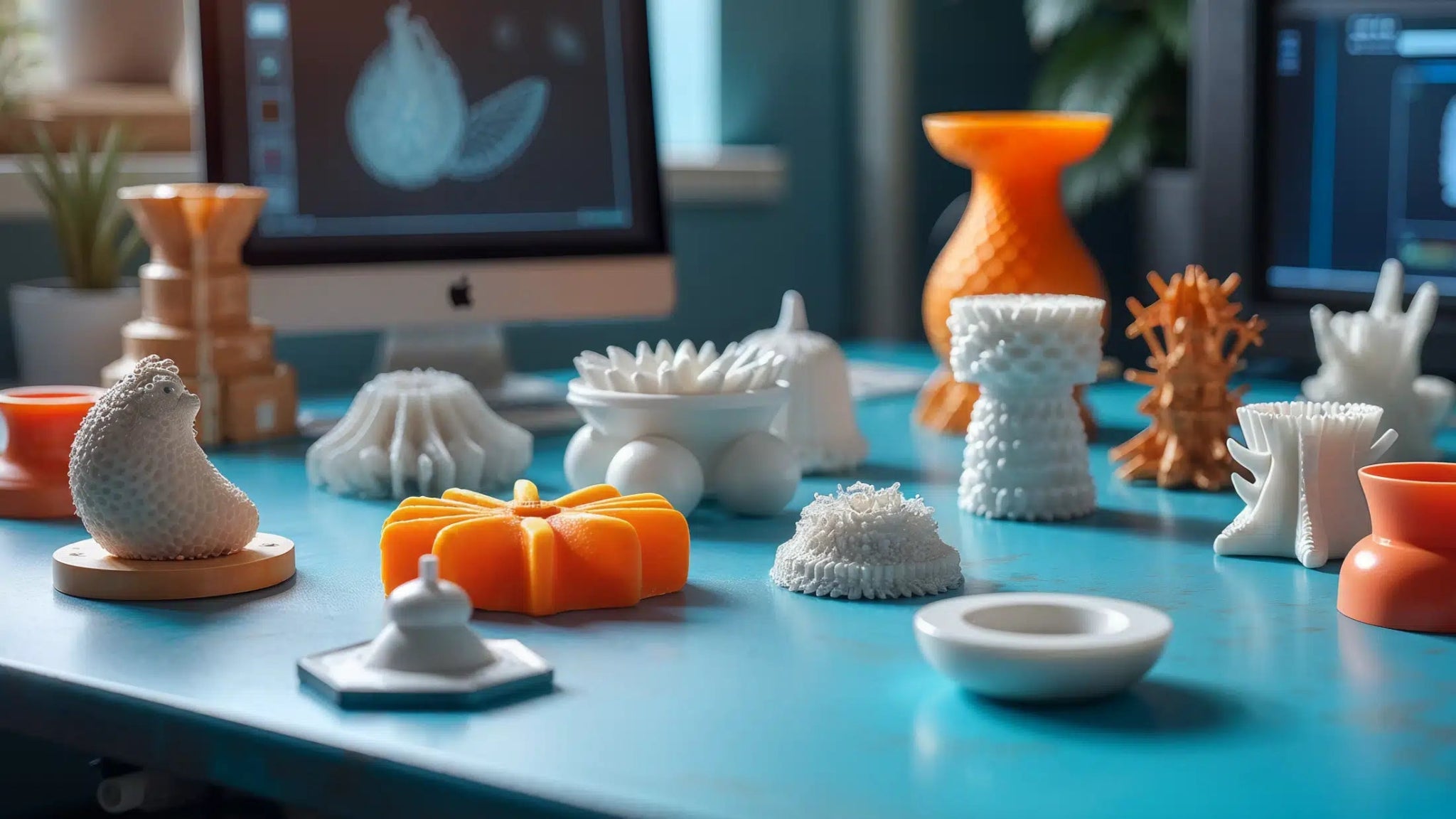3D printing is an amazing technology, but it can also be frustrating when prints don’t turn out as expected.
Many users encounter problems like warping, poor bed adhesion, or unstable layers. In this guide, we’ll walk through the 7 most common 3D printing issues and how to fix them.

1. Poor first layer adhesion
The problem:
If the first layer doesn’t stick properly to the print bed, the entire print can detach mid-process.
The solution:
-
Ensure the print bed is correctly leveled
-
Clean the surface to remove dust and grease
-
Use adhesion aids like glue stick, painter’s tape, or a heated bed
-
Adjust your Z-offset so the nozzle is not too far from the bed
2. Warping – when corners curl up
The problem:
Warping occurs when plastic cools too quickly and contracts, causing the corners of the print to lift.
The solution:
-
Use a heated bed
-
Enable an enclosure to maintain a stable temperature
-
Choose low-warp materials like PLA
-
Adjust cooling settings for a slower, more even cooldown
3. Stringing and oozing (thin threads between parts)
The problem:
Filament drips from the nozzle during travel moves, forming unwanted strings between printed areas.
The solution:
-
Enable retraction in your slicer
-
Adjust retraction distance and speed
-
Lower the print temperature to reduce filament flow
4. Under-extrusion – too little filament
The problem:
Under-extrusion means not enough filament is coming out, leading to weak or incomplete layers.
The solution:
-
Check for a partially clogged nozzle
-
Increase the flow rate in your slicer
-
Ensure the filament spool feeds smoothly and isn’t tangled
5. Over-extrusion – too much filament
The problem:
Over-extrusion results in too much plastic being extruded, causing blobby surfaces and loss of detail.
The solution:
-
Decrease flow rate (typically 90–95% of default)
-
Lower the print temperature
-
Adjust the extrusion multiplier in your slicer
6. Layer shifting
The problem:
Printed layers shift position, resulting in a skewed or distorted object.
The solution:
-
Tighten belts and screws on the printer’s motion system
-
Reduce print or travel speed
-
Ensure stepper motors are not overheating
7. Clogged nozzle
The problem:
A clogged nozzle can stop extrusion entirely or cause inconsistent material flow.
The solution:
-
Use a cleaning needle or perform a cold pull
-
Make sure your filament is clean and dry
-
Slightly increase nozzle temperature to help clear debris
Conclusion
Understanding and fixing these common 3D printing problems will save you time and frustration—while improving print quality. Adjust your slicer settings, keep your printer well-maintained, and use the right materials for your job.
Need help optimizing your 3D prints? Contact Maker Factory today—we’re here to help!



Share:
How to Optimize Your 3D Designs to Save Time and Money on Printing
Why 3D Printing Is Revolutionizing Small Businesses